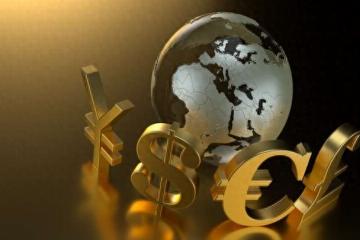Fed Tightening: What's Next?
Advertisements
As the Federal Reserve continues to navigate through the complexities of economic recovery, its latest pronouncements have sent waves of uncertainty across financial marketsThe talk of a potentially harsh winter for the economy is resonating among analysts and investors alikeThe echoes of Fed Chair Jerome Powell's previously hawkish remarks linger, while Richmond Fed President Thomas Barkin recently underscored the lingering threat posed by inflation, suggesting that restrictive interest rates may need to stay in place for an extended periodThis can only mean one thing: the anticipated rise in interest rates hasn’t concluded; in fact, it might very well continueSuch prospects serve as a worrying foreshadowing for an already fragile global economy, leaving many to ponder the implications of this tightening policy.
Inflation is becoming synonymous with economic recovery, yet it remains a troubling specter for the United States
Advertisements
Despite recent data hinting at a slight decline in inflation rates, they still hover above the Fed’s targeted level of 2%. It’s a precarious situation, akin to a ticking time bomb that has the potential to explode unpredictablyWage pressures and increasing costs of goods pose a substantial risk; once companies begin passing these costs onto consumers, inflation is bound to soar again, setting off a potentially disastrous cycleThe American public has already borne the brunt of inflation’s harsh realities, with rising prices stretching household budgets and undermining quality of life.
Financial markets are increasingly on edge as the Federal Reserve embarks on an aggressive balance sheet reduction strategyIn a startling turn of events, the reserves in the U.S
Advertisements
banking system plummeted by $326 billion in just one week, marking the most significant drop in two and a half yearsThis scenario resembles a farmer having water drained from an already parched field—consequences are direA concerted effort by the Fed to reduce liquidity could breed fears of a repeat of the liquidity crisis seen in 2019 that negatively impacted markets globally.
Fed Governor Christopher Waller candidly expressed the uncertainties tied to the execution of policy actions, while also asserting that inflationary risks must not be taken lightlyShould a tariff increase be implemented, it could undoubtedly escalate the prices of imports, further contributing to inflation and complicating the Federal Reserve's already difficult task of balancing economic stability with growth
Advertisements
It’s akin to throwing gasoline on a fire; the outcome could be catastrophic.
The labor market, which has been viewed as a beacon of stability, is starting to show signs of coolingWhile recruitment efforts remain robust, signs of a slowdown in hiring pace raise red flags about the current economic conditionsAs Barkin indicated, the combination of low layoffs and reduced hiring suggests an underlying weakness rather than a thriving economyThis creates a landscape where economic hard landing becomes more plausibleMuch like an athlete sustaining a minor injury, while still able to compete, their performance is inevitably stunted.
The evolution of monetary policy is entering a new, more stringent phase
- Stocks on Brink? Fed Rate Hike Debate Heats Up
- Transaction Banks Tap Platform Strategy for Growth
- Strong Demand for Global Electric Vehicle Market
- Treasury Yields Hit New Low Amid Wealth Shift
- Crossroads of Wealth: Where Do You Stand?
Lars Mouland, a chief credit and interest rate strategist at Nordea, emphasizes that any potential interest rate cuts will hinge on substantial improvements in inflation rates or a noticeably weakened labor marketThis raises the bar for any future easing measures, indicating that the Fed will tread cautiouslyIt is akin to a doctor monitoring the vital signs of a patient before considering a dosage adjustment; any premature action could exacerbate the situation.
Indeed, the tension between market expectations and the Federal Reserve’s policies is becoming increasingly palpableCurrent assessments of the Fed's interest rate trajectory appear to align closely with market perspectives, although there's a growing sentiment that actual rates may surpass anticipated levels, settling around 4% in the long run

This reflects concerns regarding the Fed's ongoing tightening measures while simultaneously hinting at broader apprehensions concerning economic performance moving forwardIt resembles a high-stakes gamble where investors stake their bets on the Fed’s decisions, the outcomes of which remain uncertain.
The Federal Reserve finds itself at a crossroads, grappling with the dual threats posed by persistent inflation on one side and the waning momentum of economic growth on the otherStriking an equilibrium between the two appears to require exquisite finesse and judicious decision-makingIt’s not unlike walking a tightrope; a misstep could lead to significant repercussions entwined with a potential recession precipitated by excessive tightening.
In conclusion, the actions of the Federal Reserve will indelibly impact the global economic landscape